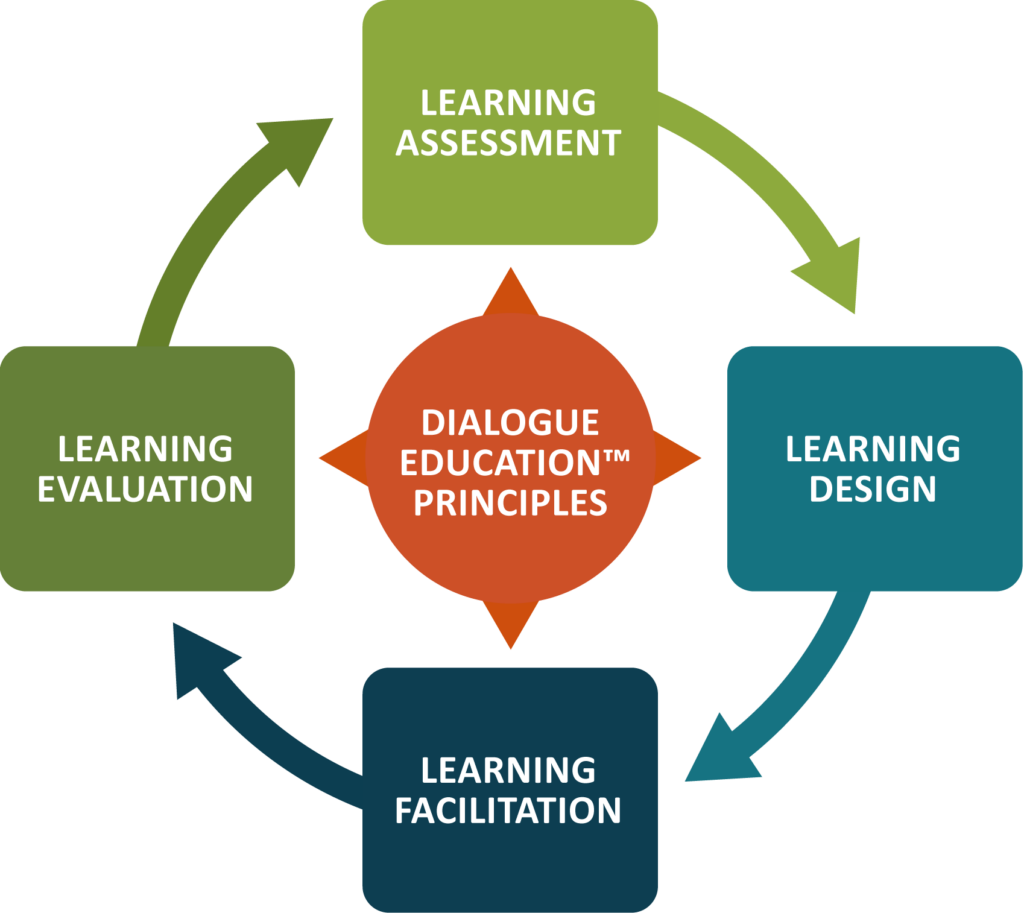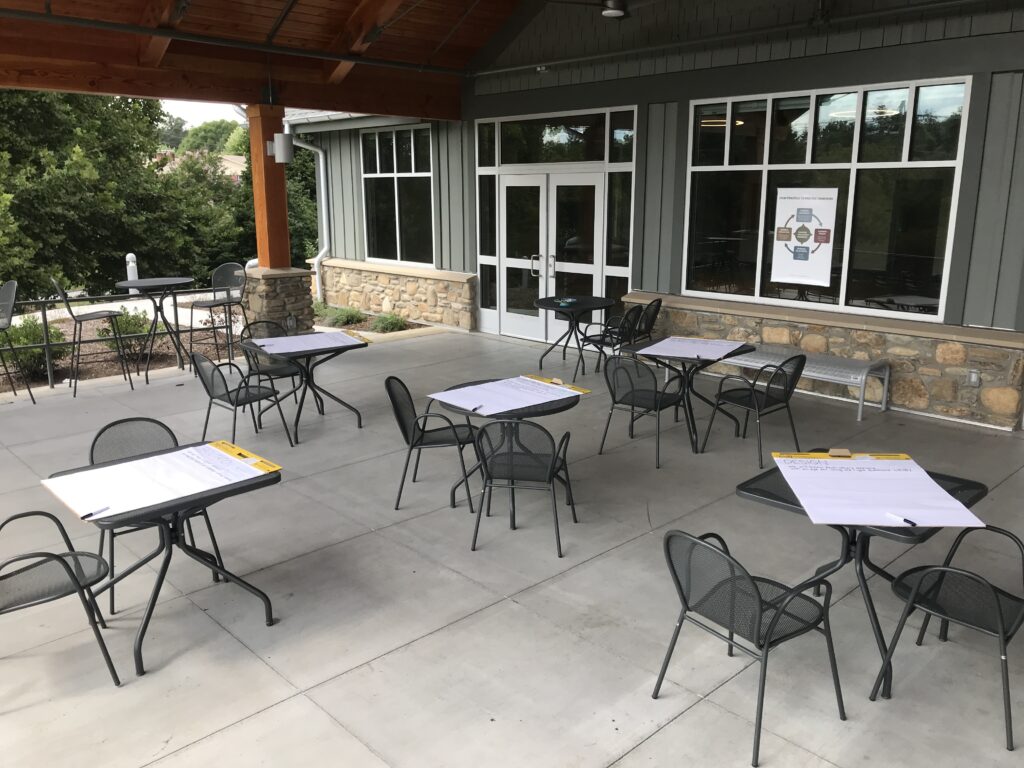Sep 5, 2022
How do you turn a concept into a useful visual to teach and reinforce that concept over time?
How do you take that visual off the page so that people can interact and learn from it?
Here’s a story to illustrate how you might do just that. We hope it inspires you with its simplicity.
A Useful Visual
Years ago, in Peter Noteboom and Jeanette Romkema’s living room, a team of us created the visual you see below. We call it our Principles to Practice Framework and we use it a lot. It seems to convey exactly what we need it to, with just a bit of explanation.
The outer circle of the Framework describes the relationship among four essential stages in the creation and implementation of any strong learning program:

- Assessment – when you discover what you can about the strengths and needs of the learners.
- Design – when you lay out all the building blocks of the learning program.
- Facilitation – when you (or someone else) take that design and bring it to life by walking people thoughtfully through it (in-person and/or online).
- Evaluation – when you and the learners reflect on all they are learning and all that they transfer from that learning to their day-to-day world.
The inner core of the Framework reminds us that all the work around the ring has to be centered on a deep commitment to proven principles of adult learning. These principles (such as engagement, respect, safety, inclusion, immediacy, relevance) are the heart that keeps the rest beating.
So, that’s it. That’s our visual. It has served us and multitudes of learners well over the years.
Taking the Visual Off the Page
Last month, we took this visual to the next level. Meg Logue and I were facilitating a course with a fantastic group of learning designers. Before the course, they let us know that they were committed to fortifying their brand by applying what they learned during the course to their ongoing work. The Director hoped that, by the end of the course, her team would have a new set of “standards” that would guide their collective work moving forward.
So, Meg and I got creative. On the last day of the course, we set up an outdoor patio with a 3-D version of the Principles-to-Practice Framework. In the center of the patio was a round table, covered with white paper titled Principles. Around the edges of the patio were four square tables covered with papers titled Assessment – Design – Facilitation – Evaluation. Under each title, we wrote one practice that the team had said they really wanted to continue after the course.

We brought everyone out to the patio and used the following modified “world cafe” style process:
- divided the participants into pairs, each starting at a different table
- gave each person a marker
- posed the following question: What do you want to see your team do consistently to create and implement powerful learning programs?
- invited them to capture all their ideas under each part of the Framework
- explained that, when the bell gently rang, they would move to the next table.
At the end, when all teams had visited each table, volunteers read aloud the array of ideas that had emerged at each station. They were great! They were specific and complementary. They were aspirational and do-able.
The very next day, the team began to refine the lists from that patio into a set of collective commitments. The framework, we trust, will always serve them as a visual reminder of those commitments and of the good time we had outside that day.
Thank you for reading our story. We hope it inspires you to teach concepts through simple visuals as well as to reinforce those concepts by bringing your visuals off-the-page and into the real world.
How do you use visuals to deepen learning?
Valerie Uccellani is GLP Senior Partner and Co-owner. Here are more blogs by Valerie.
Meg Logue is GLP’s Product Design Manager and GLP Certified Dialogue Education Practitioner (CDEP).
Here are other blogs you may be interested in:
- Ten Tips for Using Visuals
- A Picture is Worth a Thousand Words
- Getting Some Juice from the Data Chart
- An Approach that Invites Connections
- Six Core Principles, Virtually
And a podcast:



